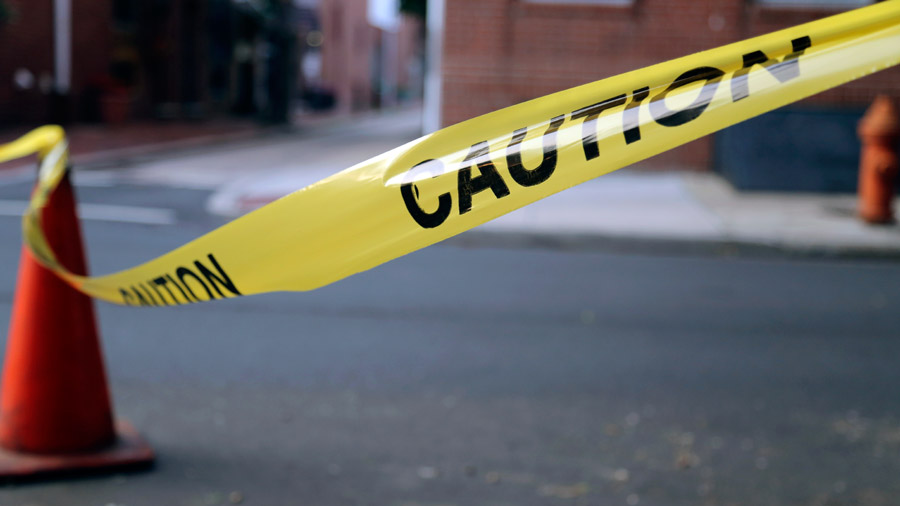
Firms and employees sentenced after death of worker
Two companies and two people have been sentenced after an 18-year-old construction worker was fatally injured while working on a house-build construction site.
P & R Plant Hire (Lincolnshire) Limited, D. Brown (Building Contractors) Limited, Brent Woods and Darrell Tripp were all fined following the death of Josh Disdel.
In July 2018, Disdel and another worker, both employed by P & R Plant Hire (Lincolnshire) Limited, had been tasked with clearing debris from manholes at a house-build construction site.
While work was taking place, Disdel’s colleague was asked if he could move the works van to allow another vehicle to pass. However, he was not aware that Disdel was lying on the road with his head and torso in a manhole, directly in front of the van.
As the vehicle moved forwards, one of the wheels entered the top of the manhole, contacting Disdel. Disdel was then taken to hospital but later died as a result of serious crush injuries.
An investigation by the HSE found that neither the Principal Contractor, D. Brown (Building Contractors) Limited, nor the groundworks sub-contractor, P & R Plant Hire (Lincolnshire) Limited, had ensured that the work was planned in such a way to ensure that workers were not exposed to risks to their health and safety.
Brent Woods, a manager within P & R Plant Hire (Lincolnshire) Limited for approximately ten years, sent employees to carry out the task without a risk assessment or method statement in place despite having previously produced such information in the past.
In addition, workers had not been trained to work in a road, had not been provided with any equipment to ensure the work was carried out safely and had not been provided with any instruction on any safety measures to be used at site.
Darrell Tripp, a site manager for D. Brown (Building Contractors) Limited for approximately four years, having worked in the construction industry for about 40 years, admitted he did not carry out a site induction for Disdel and failed to carry out suitable checks to ensure the workers had the relevant training. Tripp also failed to ensure there was a safe system of work in place of whether there were adequate control measures.
D. Brown (Building Contractors) Limited was found guilty of contravening Section 3(1) of the Health and Safety at Work etc. Act 1974. It was fined £300,000 and ordered to pay costs of £15,765.92.
P & R Plant Hire (Lincolnshire) Limited pleaded guilty to contravening Section 2(1) of the Health and Safety at Work etc. Act 1974. The company was fined £24,000 and ordered to pay costs of £2,264.87.
Brent Woods was found guilty of contravening Section 7(a) of the Health and Safety at Work etc. Act 1974. He was sentenced to 18 weeks’ imprisonment, suspended for two years, and ordered to complete 200 hours of community service and pay costs of £1,200.
Darrell Tripp was found guilty of contravening Section 7(a) of the Health and Safety at Work etc. Act. He was sentenced to eight weeks’ imprisonment, suspended for two years, and ordered to pay costs of £1,200.
Speaking after the hearing, HSE inspector Mark Welsh said:
“This was a completely avoidable incident, caused by a multitude of failures by both companies and both of the individuals who appeared in court. All of the defendants failed to adequately plan the work to identify the risks, failed to ensure that the individuals carrying out the work were trained and competent to do so, and failed to ensure a safe system of work was in place and followed. The result was the tragic loss of life of a young man who was looking forward to a bright future.”
Says International Workplace’s health and safety trainer, Jane Patching:
“To help employers identify the potential risks and manage their workplace activities effectively, there are three main areas to be considered – safe site design, safe site activity, and safe vehicles.
Safe Site: Design
It is essential to consider individual site layouts and ensure pedestrians and vehicles can move safely by implementation of effective segregation between the two. If complete segregation is not possible, then appropriate barriers and signage must be considered.Safe Site: Activity
“Employers need to carefully consider the types of activities that are taking place on the site. Reversing manoeuvres are responsible for around a quarter of fatalities involving vehicles at work. The most effective way to reduce this type of incident is to remove the need to reverse completely. One-way systems are the best way to do this, but site design may dictate that this is not possible. Therefore, consideration must be given to installing barriers where possible, planning and marking out designated reversing areas, restricting pedestrian access, using two-way radios to communicate with drivers and ensuring vehicles are fitted with suitable warning devices, e.g., reversing alarms and flashing beacons etc.Safe Vehicle
“When selecting vehicles for use in the workplace, these must be suitable and fit for purpose. Consideration must be given to the working environment for which the vehicle is intended, vehicles must have relevant warning and safety devices and inspections, daily checks and maintenance should be carried out accordingly. Employers have a duty to carry out suitable and sufficient risk assessments to ensure they have done everything reasonably practicable to reduce the risks to those working with and around workplace vehicles. Training is essential for employees, along with ensuring workers have the relevant competency levels to carry out the required activities.“A traffic management plan should be in place to include details for segregation of pedestrians and vehicles, how vehicle movements can be minimised, identification of people on site, management of reversing and turning, visibility and signage and instruction.
"It is vital that consideration is also given to potential groups where the risk could be even higher – for example vulnerable workers, those working shift patterns where there may be less supervision on site, or where environmental conditions such as poor lighting at night could increase the risks of an incident due to reduced visibility on site. Clearly defined and segregated routes for both pedestrians and vehicles must be created and careful planning must be undertaken to ensure all potential risks have been considered and control measures implemented so far as is reasonably practicable.”






